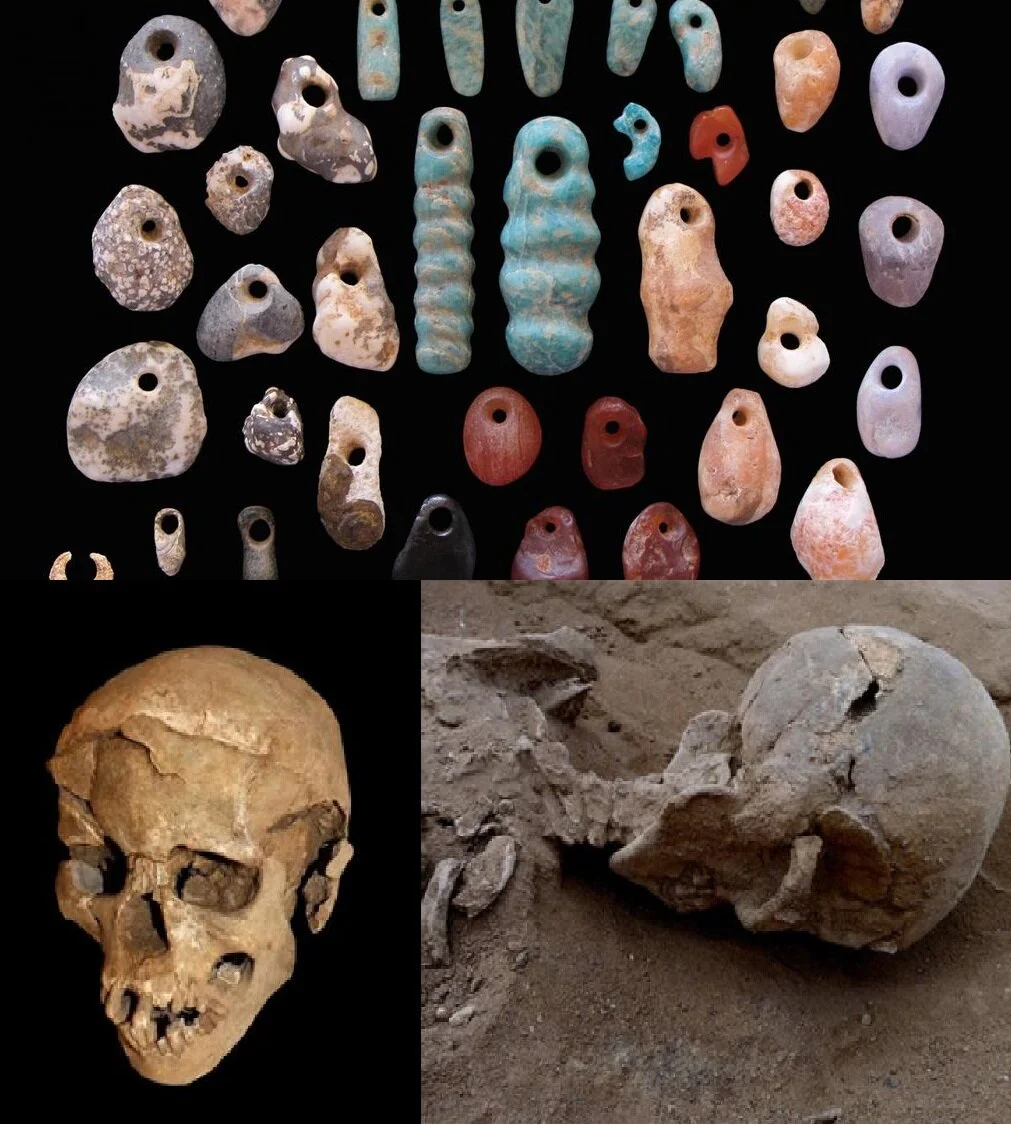Were Other Humans the First Victims of the Sixth Mass Extinction?
/TOP: STONE PENDANTS AND EARRINGS FROM THE COMMUNAL CEMETERY OF LOTHAGAM NORTH (LOCATED NEAR LAKE TURKANA). (Courtesy of Carla Klehm) BOTTOM: THE FOSSILISED BONES OF A GROUP OF PREHISTORIC HUNTER-GATHERERS WHO WERE MASSACRED AROUND 10,000 YEARS AGO HAVE BEEN UNEARTHED 30KM WEST OF LAKE TURKANA, KENYA, AT A PLACE CALLED NATARUK. VIA LCHES
Were Other Humans the First Victims of the Sixth Mass Extinction?
Nine human species walked the Earth 300,000 years ago. Now there is just one. The Neanderthals, Homo neanderthalensis, were stocky hunters adapted to Europe’s cold steppes. The related Denisovans inhabited Asia, while the more primitive Homo erectus lived in Indonesia, and Homo rhodesiensis in central Africa.
Several short, small-brained species survived alongside them: Homo naledi in South Africa, Homo luzonensis in the Philippines, Homo floresiensis (“hobbits”) in Indonesia, and the mysterious Red Deer Cave People in China. Given how quickly we’re discovering new species, more are likely waiting to be found.
By 10,000 years ago, they were all gone. The disappearance of these other species resembles a mass extinction. But there’s no obvious environmental catastrophe – volcanic eruptions, climate change, asteroid impact – driving it. Instead, the extinctions’ timing suggests they were caused by the spread of a new species, evolving 260,000-350,000 years ago in Southern Africa: Homo sapiens.
The spread of modern humans out of Africa has caused a sixth mass extinction, a greater than 40,000-year event extending from the disappearance of Ice Age mammals to the destruction of rainforests by civilisation today. But were other humans the first casualties?
